 June 2, 2016 John E. Ross, KD8IDJ, Editor
| ||||||
Dayton Hamvention General Chairman Believes 2016 Attendance Was Up Slightly Recapping Dayton Hamvention® 2016, Jim Tiderman, N8IDS, who has served as general chairman of the event for the past 2 years, said attendance this year may have been up slightly from 2015. Tiderman, who now passes the baton to a new general chairman -- Ron Cramer, KD8ENJ -- said he feels the 2016 show, overall, went well.
"In my humble opinion, it went smoother than we had a right to think it could," Tiderman told ARRL. "The credit for that happening -- this year and last -- goes to our volunteer base and returning committee chairs, who get their talents in gear and go for it." He said each year's innovations feed into the vision that guides the next Hamvention administration, which Cramer will head after serving with Tiderman as assistant general chairman for the past 2 years. Tiderman said that while it's still too soon to get an accurate attendance count for Hamvention 2016, "indicators we use as a matter of course are showing us the slightest increase." He said that while it may not have seemed that way to some visitors, he prefers to keep a positive mind. Official attendance at the 2015 show was 25,621, up by about 750 from the previous year. The weather did provide some momentary excitement, Tiderman said, when a microburst occurred in the flea market just north of the "So, where in other years there have been instances of things erupting 'from below,' this year it came from above," Tiderman quipped. Vendor spaces were nearly full, both inside and outside Hara Arena. Tiderman said the 525 to 530 booth spaces inside were nearly filled to capacity, while first-day occupancy of the 2500 flea market spaces was at 96 percent. Tiderman said he observed an "overall good mood" and "a positive attitude," and the Hamvention staff received many upbeat comments. Read more. FCC Denies Petition for Consideration in Vanity Call Sign Dispute An Arizona radio amateur has been unsuccessful in convincing the FCC to take a 1 × 2 vanity call sign away from its present holder and grant it to him. In the process, Joshua Babb, K6FZ, may have learned not to rely on informal advice from FCC staffers. Babb, of Maricopa, Arizona, had been trying to get the initial-suffix call sign W3JB since 2014, and he was briefly successful. The prior holder of W3JB, John K. Birch, had died, and the 2-year waiting period was set to end on August 18, 2014. Babb filed an application for W3JB in July 2014, however, claiming an exemption to the 2-year waiting period on grounds that he was the deceased licensee's nephew, and the FCC granted it.
Babb sought clarification of the W3JB availability date from an FCC staff member, who calculated that it was November 2, 2015. Babb filed two preference-list applications for W3JB on that date, as well as one on November 3 and another on November 5. W3JB instead went to Scott Phillips of Plano, Texas, who had filed a competing November 3 application, granted through the FCC's "standard lottery process." The FCC staffer later informed Babb that November 3 actually was the correct date. The FCC turned away Babb's subsequent Petition for Reconsideration of the grant to Phillips, saying that its Universal Licensing System (ULS) had processed the applications correctly. "[E]rroneous staff advice is not grounds for reconsideration," the FCC said in its denial Order. "Licensees are obligated to know the Commission's rules. It is well established than an applicant acts on staff advice at his own risk." In any case, the FCC pointed out, Babb did file one application on the correct day. The Doctor Will See You Now! "All About Baluns" is the topic of the newest (June 2) episode of the "ARRL The Doctor is In" podcast. Listen...and learn!
Every 2 weeks, your host, QST Editor in Chief Steve Ford, WB8IMY, and the Doctor himself, Joel Hallas, W1ZR, will discuss a broad range of technical topics. You can also e-mail your questions to [email protected], and the Doctor may answer them in a future podcast. Enjoy "ARRL The Doctor is In" on Apple iTunes, or by using your iPhone or iPad podcast app (just search for "ARRL The Doctor is In"). You can also listen online at Blubrry, or at Stitcher (free registration required, or browse the site as a guest) and through the free Stitcher app for iOS, Kindle, or Android devices. If you've never listened to a podcast before, download our beginner's guide. National Parks on the Air Update NPOTA statistics through the end of May show that 387,000 contacts have been submitted via Logbook of The World. This comes from nearly 6300 activations by 775 different operators. As of this week, 422 of the 484 eligible NPS units have been activated. Most remaining units are either in Alaska or in urban areas, such as Washington, DC, or New York City. Just as with the DXCC program, the "rarest of the rare" NPS units are showing themselves. It will take considerable planning, logistics, and cooperation with NPS administrators for crafty Activators to put these remaining units on the air.
A whopping 79 activations are scheduled for June 2-8, including the Minidoka National Historic Site in Idaho, and the Richmond National Battlefield Park in Virginia. Details about these and other upcoming activations can be found on the NPOTA Activations calendar. Keep up with the latest NPOTA news on Facebook. Follow NPOTA on Twitter (@ARRL_NPOTA). Argentine Satellite Carrying Amateur Radio Payload Launched from China The Argentine ÑuSat-1 carrying the LUSEX (LU Satellite Experiment) Amateur Radio U/V linear transponder and 436 MHz beacon launched May 30 at 0317 UTC from China. With ÑuSAT-1 on the launch was sister satellite ÑuSat-2, which carries a 437 MHz beacon. Gunter's Space Page reports that the Argentine ÑuSat Earth-observation satellites form the Aleph-1 constellation developed and operated by Satellogic S.A.
The transponder, with a 30 kHz bandwidth and transmitting with 250 mW, will have an uplink passband (SSB, CW) at 435.935~435.965 MHz, and a downlink passband at 145.965~145.935 MHZ. CW telemetry will be transmitted on 145.900 MHz. The NuSAT-1 GFSK telemetry beacon is at 436.445 MHz, and the NuSAT-2 GFSK telemetry beacon is at 437.445 MHz. Geostationary Es'hail-2 Satellite Set to Launch Later this Year Launch of the geostationary Es'hail-2 satellite into orbit is planned for December 2016. The satellite will be placed in a 25.5° orbit. Coverage of the Amateur Radio narrowband (NB) and wideband (WB) transponders should extend from Brazil to Thailand.
The NB linear transponder will have an uplink at 2400.050-2400.300 MHz, with a downlink at 10,489.550-10,489.800 MHz. The WB digital transponder will uplink at 2401.500-2409.500 MHz and downlink at 10,491.000-10,499.000 MHz. AMSAT-DL President Peter Guelzow, DB2OS delivered a presentation on Es'hail at the 2013 AMSAT-UK Colloquium. Read more. -- Thanks to AMSAT News Service via AMSAT-UK, and AMSAT-DL A Dozen Schools/Organizations Move Closer to Hosting Ham Radio Contacts with ISS Crew The Amateur Radio on the International Space Station (ARISS) program has announced that 12 schools or organizations that submitted proposals to host an Amateur Radio contact with a The 12 semifinalists, in eight states, must now submit an acceptable equipment plan that demonstrates their ability to execute the ham radio contact. Once the ARISS technical team approves the equipment plan, the selected schools/organizations will be scheduled for contacts, matching their availability and flexibility with the scheduling opportunities that NASA can offer. The schools and organizations are:
The primary goal of the ARISS program is to engage young people in science, technology, engineering, and math (STEM) activities and to raise their awareness of space exploration, space communication and related areas of study, and career possibilities. Tell Us What You Think!
Diana Feinberg, AI6DF, Appointed as Los Angeles Section Manager Diana Feinberg, AI6DF, of Palos Verdes Peninsula, California, was appointed ARRL Los Angeles Section Manager, effective on June 1. She assumed the Section reins from David Greenhut,
N6HD, who had announced his resignation from the volunteer post due to time constraints. Greenhut had served since October 2009. When a Section Manager vacancy occurs between elections, the position is filled by appointment. ARRL Field Services and Radiosport Manager Dave Patton, NN1N, consulted with ARRL Southwestern Division Director Richard Norton, N6AA, before making the appointment. Feinberg will complete the current term of office, which extends through September 2017. Feinberg is the president of the Palos Verdes Amateur Radio Club (K6PV), which specializes in public service and emergency communication. She also chairs the Los Angeles Area Council of Amateur Radio Clubs, and she served as the chair of the 2015 HAMCON and the ARRL Southwestern Division Convention. Feinberg is an active DXer and Volunteer Examiner. Signal Bounced Off ISS Heard Across the Atlantic A 2 meter signal from the UK, reflected off the structure of the International Space Station (ISS) on May 2, was heard across the Atlantic. Following 2 weeks of preparation, Tim Fern, G4LOH, in Cornwall (IO70jc), and Roger Sturtevant, VE1SKY, in Nova Scotia (FN74iu) attempted a FSK441 contact.
While two-way communication did not happen, the reception is being verified as a possible DX record for satellite reflection. Later in May, Fern, operating as GK4LOH and transmitting in CW, was received twice in the much-closer GN37 grid by VO1HP at VO1FN in Newfoundland. In 2014, RSGB VHF Manager John Regnault, G4SWX, received a 2 meter signal from VC1T, where a team was trying to win the Brendan Trophy for the first transatlantic contact on 144 MHz. Upon investigation, it was determined that the VC1T FSK441 signal that G4SWX heard also had bounced off the ISS rather than via terrestrial propagation and would not qualify for the Brendan Trophy, offered by the Irish Radio Transmitters Society (IRTS).The Brendan Trophy will recognize the first "traditional mode" two-way contact (ie, SSB or CW) capable of being copied without machine assistance. CQ Announces its 2016 Hall of Fame Inductees
CQ Amateur Radio Hall of Fame The CQ Amateur Radio Hall of Fame honors individuals, licensed or not, who have made significant contributions to Amateur Radio, and radio amateurs who have made significant contributions to Amateur Radio, to their professions, or to some other aspect of life.
CQ DX Hall of Fame The CQ DX Hall of Fame honors amateurs who excel not only in personal performance as DXers, but who give back to the hobby in outstanding ways.
CQ Contest Hall of Fame The Contest Hall of Fame honors amateurs who excel not only in personal performance as contesters, but who give back to the hobby in outstanding ways.
Formal inductions to the CQ Contest and DX Halls of Fame took place in conjunction with Dayton Hamvention®. Read more. Don Wallace Museum Foundation Closing; Donates Assets to NCDXF The Don Wallace Museum Foundation (DWMF) is shutting down, as the famous W6AM Rhombic Ranch in Rancho Palos Verdes, California, has been subsumed by residential development. The DWMF has donated $29,000 to the Northern California DX Foundation (NCDXF).
Locascio said the foundation is in the final phase of closing down after nearly 30 years of existence. "The W6AM Radio Club will continue as long as needed to support the W6AM call sign," he noted. Locascio said the Board was making the donation to NCDXF "on behalf of previous donors," who had hoped to see some radio activity at the old W6AM Rhombic Ranch. "Unfortunately, we were not able to achieve our long term goal of an actual museum with an active radio station on the property," Locascio said. A 18 × 24 bronze plaque on a large rock, unveiled in March 2015 and dedicated to the memory of Don Wallace, W6AM, remains at the entry to the Wallace Ranch (see Sept 2015 QST, p 20), where more than 80 homes now sit. Read more. The Yasme Foundation Announces Excellence Awards, Supporting Grants
Yasme Foundation grants support the Foundation's aim to encourage youth participation in Amateur Radio and operating activities. To support scholarships and youth programs, grants will go to the ARRL Foundation, to fund the Yasme Foundation scholarship and to the Foundation for Amateur Radio (FAR) to support its 2017-2018 scholarship program. A third Yasme Foundation grant made it possible for two young Ethiopian amateurs to take part in the Youth Contesting Program in Estonia. To support HF operating around the world, additional Yasme Foundation supporting grants went to the DX Code of Conduct founder and website operator and to the 2016 Friendship Radio Games. ES9C and 9A1A Make Room for Youthful Contesters IARU Region 1 reports that young operators participated as "Big Guns" in recent contests from both ES9C, the station of ES5TV in Estonia, and 9A1A, the Croatian DX Club station, as part of the Youth Contesting Program (YCP). All operators are 26 years of age, or younger. The team at ES9C took part in the ARI International DX Contest over the May 7-8 weekend, while the second group at 9A1A operated in the CQ-M International DX contest over the May 14-15 weekend.
At ES9C were youths from Sweden, Bulgaria, Ethiopia, and Italy, as well as two young Estonian operators and a few older local operators to help the youngsters experience radiosport. At 9A1A in Croatia were a couple of young ops from Hungary as well as several young Croatian hams, and some veteran 9A1A team members to mentor. A summary of the activities at ES9C and 9A1A appears on the IARU Region 1 website. YCP operators are expected at SK3W/SK9HQ for the IARU HF Championship in July, and at 4O3A for the CQ World Wide RTTY DX Contest in September. -- Thanks to IARU Region 1
. . . . . . ,
The K7RA Solar Update Tad Cook, K7RA, Seattle, reports: Solar indices barely changed over the past week, with average daily sunspot numbers rising from 25.3 to 33, and the average daily solar flux dropping from 97 to 87.4. The average daily planetary A index rose from 7.1 to 8.9, and the average daily mid-latitude A index rose from 7 to 9.
Predicted planetary A index is 5, 10, 35, 26, and 14 on June 2-6; 8 on June 7-8; 5 on June 9-10; 12 on June 11-13; 8 on June 14-15; 5, 15, and 10 on June 16-18; 5 on June 19-22; 10, 12, 8, 20, and 12 on June 23-27; 5 on June 28-29; 8, 15, 20, and 15 on June 30-July 3; 5 on July 4-7; 12 on July 8-10, and 8 on July 11-12. A few days ago the predicted solar flux numbers over the 6 weeks dropped significantly. More on this in our Friday bulletin. Sunspot numbers for May 26 through June 1 were 30, 19, 31, 25, 56, 40, and 30, with a mean of 33. The 10.7 centimeter flux was 91.7, 90.4, 87.7, 83, 86.2, 86.6, and 86, with a mean of 87.4. Estimated planetary A indices were 4, 10, 14, 7, 11, 10, and 6, with a mean of 8.9. Estimated mid-latitude A indices were 4, 12, 13, 8, 9, 10, and 7 with a mean of 9. Send me your reports and observations. Just Ahead in Radiosport
See the ARRL Contest Calendar for more information. For in-depth reporting on Amateur Radio contesting, subscribe to The ARRL Contest Update via your ARRL member profile e-mail preferences. Upcoming ARRL Section, State, and Division Conventions
Find conventions and hamfests in your area.
. .
Subscribe to...
Free of charge to ARRL members...
| ||||||
.JPG)
.jpg) Mendelson's tent. The strong gust of wind took out two or three vendor tents, winding a pop-up tent leg around the fiber cable handling Internet service for the flea market office. "This caused stress and strain on the cable, and down it came," Tiderman recounted. "It did not break, but it did stop activity around the area of the downed cable until the Hara crew got it back into the air.
Mendelson's tent. The strong gust of wind took out two or three vendor tents, winding a pop-up tent leg around the fiber cable handling Internet service for the flea market office. "This caused stress and strain on the cable, and down it came," Tiderman recounted. "It did not break, but it did stop activity around the area of the downed cable until the Hara crew got it back into the air..jpg) Subsequently pressed to document that relationship, Babb indicated that Birch actually had been his great-great uncle, the FCC recounted in an
Subsequently pressed to document that relationship, Babb indicated that Birch actually had been his great-great uncle, the FCC recounted in an .jpg) Sponsored by
Sponsored by 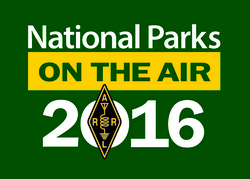 Don't forget! National Trails Day is June 4. If you're looking for an activation, put an NPOTA trail on the air! There will be plenty of trail activations for NPOTA that day, including the big
Don't forget! National Trails Day is June 4. If you're looking for an activation, put an NPOTA trail on the air! There will be plenty of trail activations for NPOTA that day, including the big  LUSEX is an
LUSEX is an 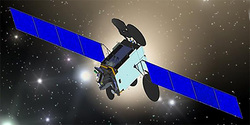 Es'hail 2 will carry two "Phase 4" non-inverting Amateur Radio transponders operating in the 2.4 GHz and 10.45 GHz bands. A 250 kHz bandwidth linear transponder is intended for conventional analog operation, and an 8 MHz bandwidth transponder is designed for experimental digital modulation schemes and DVB amateur television.
Es'hail 2 will carry two "Phase 4" non-inverting Amateur Radio transponders operating in the 2.4 GHz and 10.45 GHz bands. A 250 kHz bandwidth linear transponder is intended for conventional analog operation, and an 8 MHz bandwidth transponder is designed for experimental digital modulation schemes and DVB amateur television.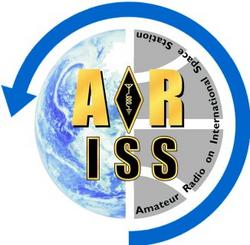 member of the ISS crew have moved into the next stage of the selection process. The contacts would take place during the first half of 2017.
member of the ISS crew have moved into the next stage of the selection process. The contacts would take place during the first half of 2017.
 Both stations aimed at the calculated grid HO11nl for a 144.175 MHz contact attempt with a mutual window of less than 1 minute. VE1SKY was able to copy G4LOH at a distance of 4441 kilometers (approximately 2753 miles). This was the first signal received via ISS bounce from Europe to North America, and the first intentional signal heard via ISS reflection in any direction across the North or South Atlantic.
Both stations aimed at the calculated grid HO11nl for a 144.175 MHz contact attempt with a mutual window of less than 1 minute. VE1SKY was able to copy G4LOH at a distance of 4441 kilometers (approximately 2753 miles). This was the first signal received via ISS bounce from Europe to North America, and the first intentional signal heard via ISS reflection in any direction across the North or South Atlantic.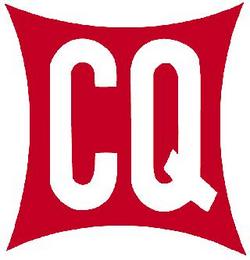 CQ magazine
CQ magazine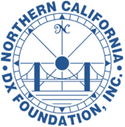 "The donation comes with no restrictions or caveats," DWMF Board Chair Joe Locascio, K5KT, said. "As I strongly suspect, Don (the original) W6AM would favor such a donation to an organization dedicated to DXing!"
"The donation comes with no restrictions or caveats," DWMF Board Chair Joe Locascio, K5KT, said. "As I strongly suspect, Don (the original) W6AM would favor such a donation to an organization dedicated to DXing!"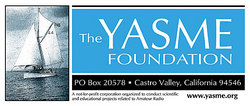 The Yasme Foundation
The Yasme Foundation%20ES9C.jpg)

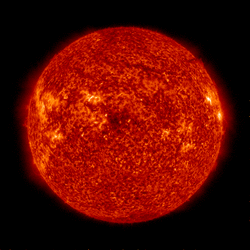 Predicted solar flux for the near term is 85, 80, and 75 on June 2-4; 80 on June 5-17; 85 on June 18-21; 80 on June 22-26; 75 on June 27-July 4, and 80 on July 5-14.
Predicted solar flux for the near term is 85, 80, and 75 on June 2-4; 80 on June 5-17; 85 on June 18-21; 80 on June 22-26; 75 on June 27-July 4, and 80 on July 5-14.







